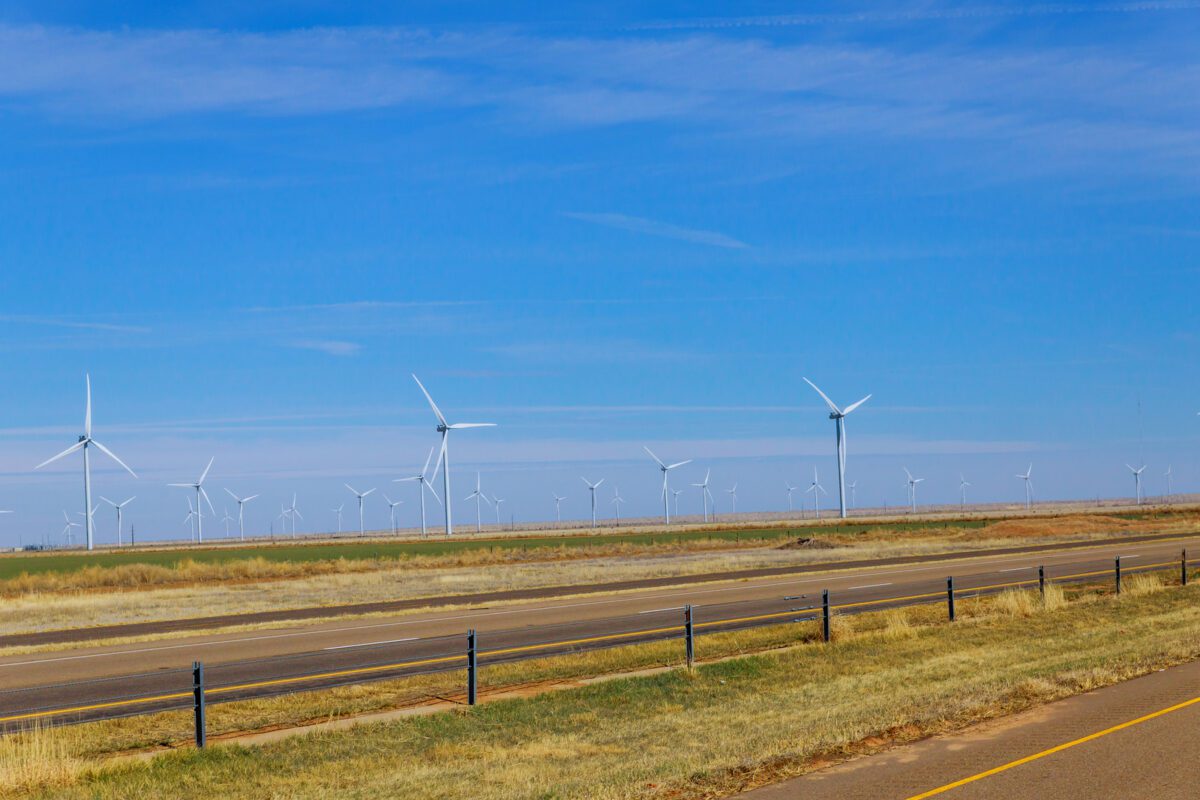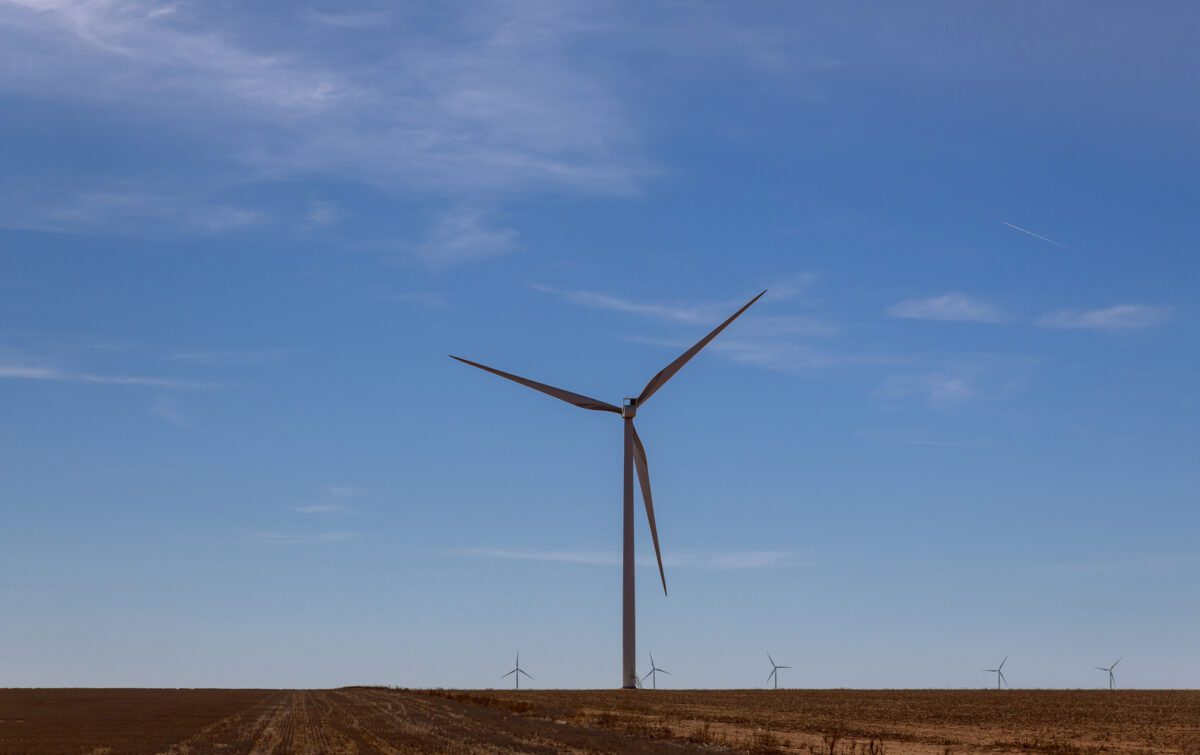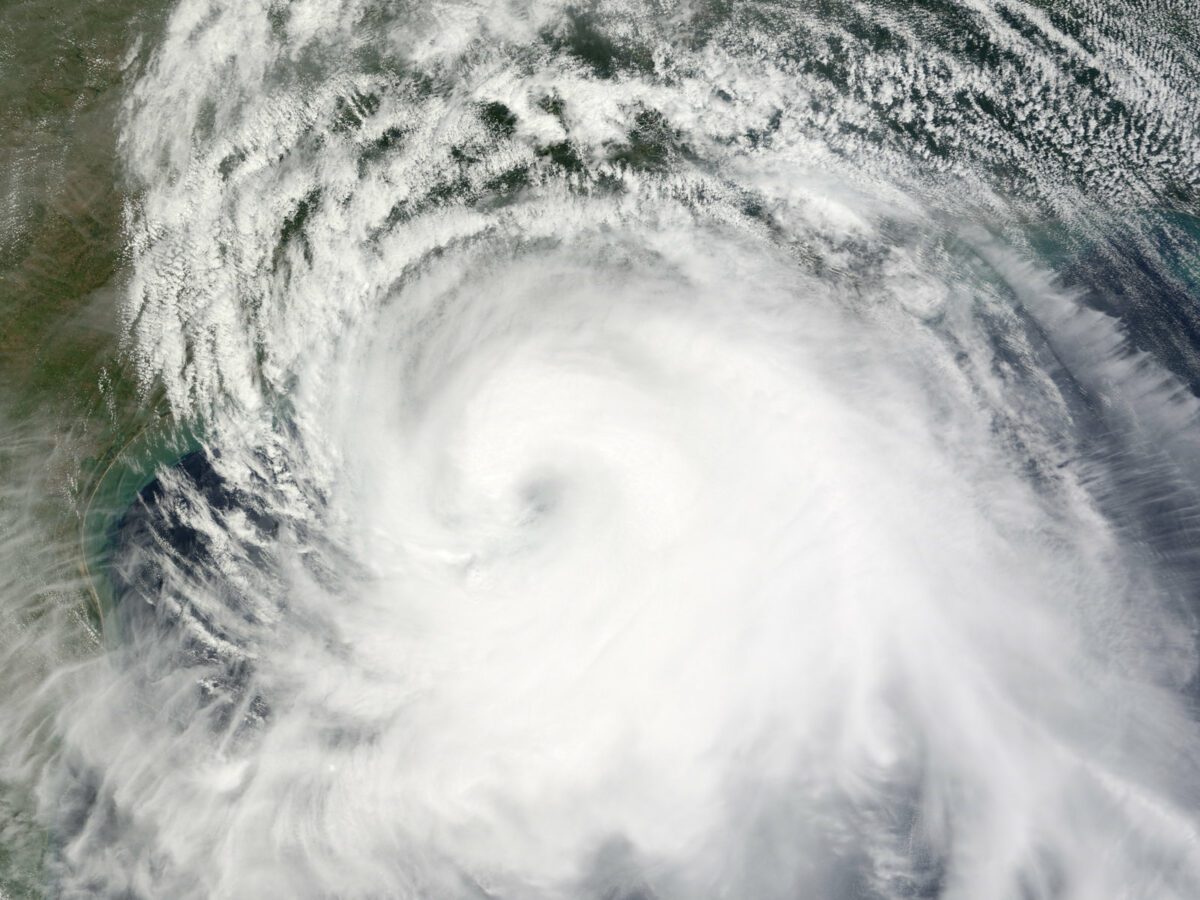Share the post "Blown Away: The Reasons Behind Texas’ Windy Conditions"
Texas is known to be one of the windiest states in the United States. Even Lubbock-born singer Butch Hancock called West Texas “the wind’s dominion” in one of his songs. The wind in parts of Texas has been known to test the patience of Texans and even lead to “prairie madness” during pioneer times. But what makes Texas so windy compared to the other states in the U.S.?
Texas is so windy primarily because of its location and topography. Seasonal changes and the global phenomenon of jet streams also affect the wind direction and intensity in Texas. Northern and western Texas are more susceptible to strong winds, and the windiest time of year for Texans is April.

Texas Is So Windy Because Of Its Location
Given its location in the United States, Texas is caught between the cold air masses from the north and warm, tropical air masses from the south. The two air masses tend to converge over Texas and surrounding states, resulting in an imbalance in air pressure. The closer the imbalanced air masses, the windier it gets.
The windiness starts around winter, as the various air masses form and move over the Rocky Mountains. The imbalance in air pressure lends itself to the following:
- Increased wind speeds
- Increased gusts
- North Texas tornadoes and twisters are prevalent from April to June.
The Topography Of Texas Lends Itself To Strong Winds
Texas is also windy because of its topography. The Texas Panhandle is particularly windy because of the westerly wind that blows over the Rocky Mountains to the high plains. The constant low-pressure system on the eastern side of the Rocky Mountains causes an imbalance in air pressure.
The imbalance in air pressure causes westerly solid and southwesterly winds across the treeless plains. The wind speeds can reach 50 miles per hour or higher during winter and spring. Despite the wind, the skies are often clear, and the temperatures warm. The air is usually filled with dust, and it is common to see tumbleweeds blowing across the plains.
The topography of Texas lends itself to channeling unchallenged winds and creating an imbalance in pressure systems. Amarillo, one of the windiest parts of Texas, is a good example.
Amarillo, Tx, Topography Facts
- Amarillo has flat plains about 3,700 ft above sea level.
- The Canadian River runs eastward through the plains. Its bed is 800 ft lower than the plains in some areas.
- The Palo Duro Canyon in Amarillo is about 1,000 ft deep.
- To the east are treeless grasslands sloping downwards.
- In the grasslands are many shallow and dry Playa lakes.
- To the west and northwest of Amarillo, the terrain rises gradually.

Texas Wind And The “Jet Stream” Influence
The “Jet Stream” is a global phenomenon that affects Texas wind speeds – specifically during the springtime. Jet streams are thin bands of strong winds in the upper parts of the atmosphere. In winter, a jet stream moves south from Canada. The strong winds in the jet stream move from west to east.
The dry southwesterly winds from Mexico and the cold fronts from the north create an imbalance in air pressure over Texas. This results in volatile weather patterns and strong winds that change direction. These “pressure gradients” can be attributed to the jet stream.
The jet stream’s strength and location are affected by the following:
- Terrain. Places near mountains experience stronger gusts as the wind blows down the hill. Additionally, areas with fewer trees experience higher winds as trees act as a windbreak.
- Warm ocean waters. For example, during “El Niño,” the warm Pacific Ocean waters caused a southerly jet stream and a windier spring.

Seasonal Air Pressure Systems Over Texas
The seasonal changes in the air temperatures in the different hemispheres also cause an imbalance in atmospheric pressures. The wind will blow from the high-pressure system to a low-pressure system to create a balance in atmospheric pressure.
Cold fronts in the winter increase the likelihood of strong winds in Texas. In these cases, the wind can reach average speeds of over 40 miles per hour. In contrast, August – the official last month of summer – is the least windy month in Texas.
Texas Is Very Windy In Spring
Combined with its location and topography, the changing seasonal air masses that converge over Texas increase the average wind speeds. The most prevalent time for increased winds in Texas is during the meteorological season of spring.
So, Texas usually experiences increased average wind speeds during March, April, and May. This is because the northern hemisphere is transitioning from winter to spring, while the southern hemisphere is moving from summer to fall.

The Windiest Time In Texas
For over 8 months of the year, Texas has an average wind speed of more than 9.9 miles per hour. This period extends from October to June. However, April is usually the windiest month of the year. For example, Texas City’s average hourly wind speed is 11.6 miles per hour.
Below is a table comparing the windy days in Dallas during April over the last few years. Unofficially, meteorologists define a “windy day” as having winds averaging over 30 miles per hour.
| Number of “Windy” Days in April in Dallas | ||
| Year | Number of Days where wind exceeded 30mph | Maximum gust speed recorded |
| 2018 | 17 | 47 |
| 2019 | 18 | 63 |
| 2020 | 15 | 58 |
| 2021 | 14 | 44 |
| 2022* | 16 | 61 |
| * Stats recorded on April 21st, 2022 |
Texas Winds FAQs
Is Texas Becoming Windier?
April 2022 saw an increase in windy and gusty days. It’s the windiest April Texas has had in 59 years. The average wind speed in April 1963 averaged 15.7 miles per hour.
Which Texas City Is The Windiest?
Based on a minimum of 20 years of data, Amarillo is the windiest city in Texas. It is the fourth windiest city in the United States. The annual average wind speed in Amarillo is 13.6 miles per hour. The strongest gusts recorded in Amarillo were 84 miles per hour on May 15th, 1949.
References:
- Climate and Average Weather in Texas City: weatherspark.com
- Fun Facts on Wind: washingtonpost.com
- Climate Narrative for Amarillo: weather.gov
- WFAA8 Meteorologist Report: youtube.com
Share the post "Blown Away: The Reasons Behind Texas’ Windy Conditions"
Christian Linden is a seasoned writer and contributor at Texas View, specializing in topics that resonate with the Texan community. With over a decade of experience in journalism, Christian brings a wealth of knowledge in local politics, culture, and lifestyle. He holds a Bachelor's degree in Communications from the University of Texas. When he's not writing, Christian enjoys spending weekends traveling across Texas with his family, exploring everything from bustling cities to serene landscapes.











